Featured : Hundred years of universal suffrage, a celebration
A century ago, in 1919, Dutch parliament made a decision: henceforth, all Dutch men and women would be entitled to vote. A milestone that is worth celebrating. Find out how it all started and how the law on voting in the Netherlands is ever changing.
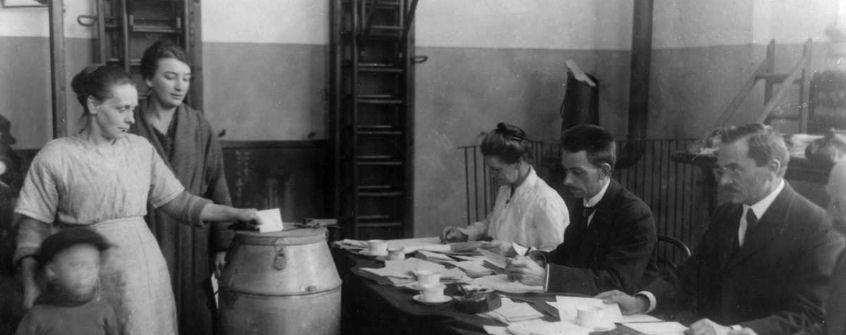
Every Dutch citizen has the right to help decide who governs the Netherlands. However, this right cannot be taken for granted: the introduction of universal suffrage, the right of every citizen to vote in elections, was preceded by a long fight. The Dutch parliament – the House of Representatives – held numerous discussions and debates on the issue. Dutch citizens, many of them famous, others unknown, held protests and demonstrated. Slowly but surely, the right to vote was extended. A century ago, in 1919, the Dutch parliament made a decision: henceforth, all Dutch men and women would be entitled to vote. It is a milestone that is worth celebrating.
The road towards universal suffrage in the Netherlands
1848 To find out how it started, we need to go back to 1848. Europe was undergoing a period of unrest. The Dutch King was eager to prevent a revolution in the Netherlands. That is why he approached politician Johan Rudolph Thorbecke and asked him to draft a new Constitution, offering ‘the people’ a greater say. From then on, Dutch men aged 23 and above were able to elect MPs directly. This right to vote did not apply to all men: only those who paid a certain amount in taxes could cast a vote. In practice, that was just 1.8% of the Dutch population.
1879 Some Dutch people believed that more people should have a right to vote. A movement to extend suffrage arose. On 8 August 1879, an association calling for universal suffrage (Vereeniging ‘Algemeen Kies- en Stemrecht’) was set up.
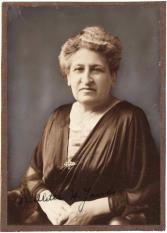
1883 It was around this period that the call for women’s suffrage also began to be heard. Its most famous advocate in the Netherlands was Aletta Jacobs, the country’s first female doctor. In 1883, she asked for permission to vote in the city council elections in Amsterdam. The city administrators refused to allow her on the electoral roll. Their reason: she was a woman. Jacobs pursued the matter through the courts, eventually to the Supreme Court. It ruled in favour of Amsterdam. At this point, 3% of the Dutch population had the vote.
The Elections Act
1887 However, the pressure from the suffrage movement had an effect. In 1887, the government amended the Elections Act (Kieswet). From now on, electors had to have ‘characteristics of suitability and societal prosperity’. Men needed to pay less tax in order to be able to vote. This meant that, in the next elections, 6.6% of Dutch citizens were permitted to vote.
1894 The debate about suffrage reached Parliament. Minister of Foreign Affairs Johannes Tak van Poortvliet wanted to extend the right to vote. The House of Representatives fought over the issue for two years. There was so much disagreement about Tak's proposal that divisions began to emerge within parties. Tak's supporters, were known as ‘Takkians’, his opponents ‘anti-Takkians’. Eventually, Tak withdrew his proposal, a broken man. Still only around 6% of Dutch citizens had the right to vote.
1896 Where Minister Tak failed, Minister of the Interior Samuel van Houten had greater success in 1896. He brought about a new Elections Act. It took him almost 150 pages to describe the new law. Many more Dutch men were now eligible to vote: 577,000 instead of 302,000. However, the rules were complicated. Ordinary workers saw the new act as a watered-down version of Tak's idea. But the percentage of Dutch citizens with the right to vote increased to 11.6%.
Amendment to the Constitution
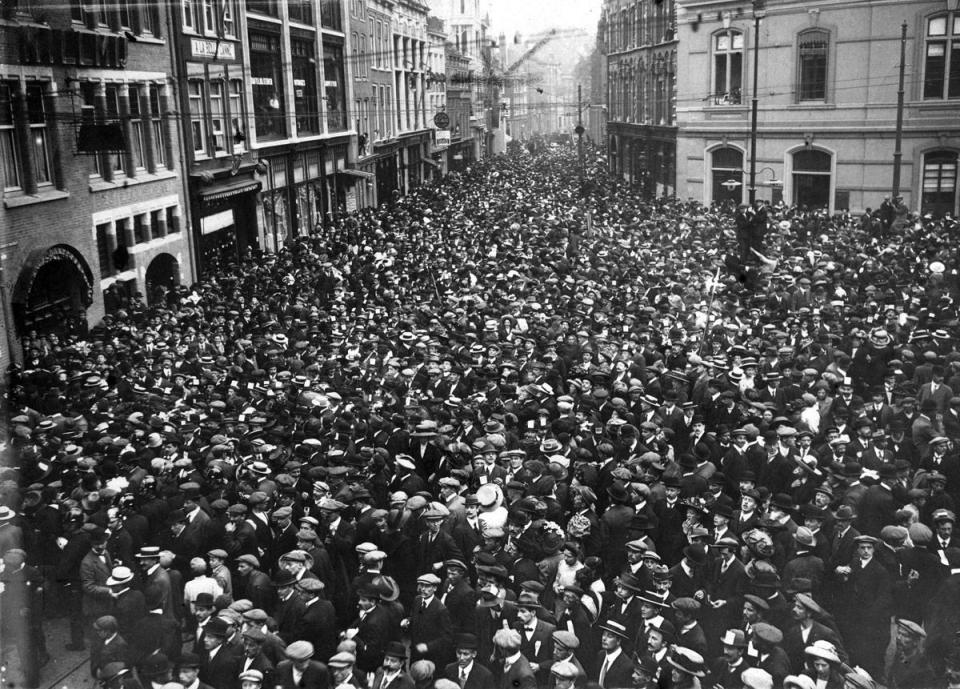
1911-1916 Socialist Pieter Jelles Troelstra felt the time had come to take action. With his party, he organised mass demonstrations. Between 1911 and 1916 tens of thousands of Dutch people demonstrated in favour of universal suffrage and women’s suffrage. On Tuesday, 19 September 1911, 20,000 people marched through the streets of The Hague. Troelstra predicted: "This may be the first, but it will not be the last Red Tuesday!" By 1913, 15.6% of Dutch people could vote.
1917 Under the leadership of Prime Minister Pieter Cort van der Linden, the Dutch political parties reached a compromise. In exchange for universal suffrage, the government agreed to subsidise Christian schools. On Wednesday, 12 December 1917, Cort van der Linden signed an amendment to the Constitution. Across the Netherlands, mayors and aldermen read out the news in their town halls. Celebrations were held all over the Netherlands! On 3 July 1918, all Dutch men aged 25 and above were entitled to vote. That was 22.9% of the Dutch population.
First woman in the House of Representatives
1918 In July 1918, women were not eligible to vote themselves, but it was permitted to vote for them. Rotterdam-based teacher Suze Groeneweg became the first woman to enter the House of Representatives. It was a sensation: her election was covered by all the newspapers. She was even given her own toilet in the parliament building, where only men’s facilities were available.
1919 The universal suffrage movement now really started to take off. Henri Marchant, alias ‘The General’ and ‘the Tiger’, submitted a draft bill: it called for Dutch women to be given the vote alongside men. Although opposition remained, particularly in the Christian parties, this was a change whose time had come. On 9 May 1919, the House of Representatives voted in favour of women's suffrage by a large majority: 64 votes in favour and 10 against. From now on, 46.3% of Dutch people had the right to vote.
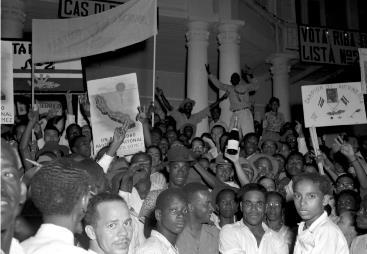
1948 Universal suffrage did not apply in the colonial territories of the Dutch East Indies, Suriname and the Dutch Antilles, where only men who paid a certain amount of tax were eligible to vote. Moises Frumencio da Costa Gomez called for black residents to be given a greater say on Curaçao. By April 1948, this had been achieved: universal suffrage was introduced in Suriname and the Dutch Antilles. A year later, the Netherlands recognised Indonesia as an independent country. Dutch Indonesians returning to the Netherlands were given the right to vote. The percentage of Dutch citizens (in the European part of the Netherlands) eligible to vote reached 55.9%
Europe
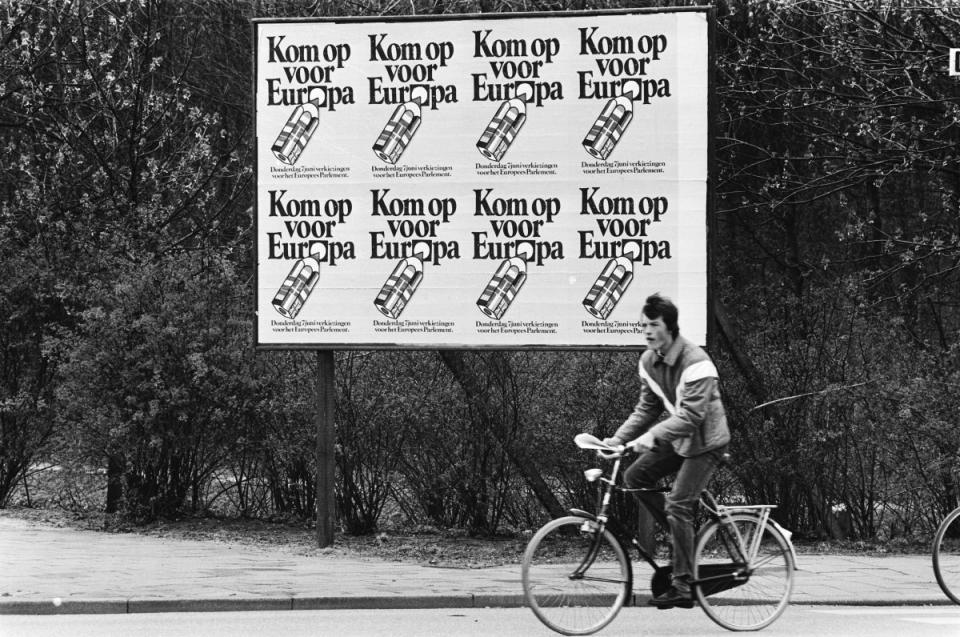
After 1948 Electoral law continued to change. For example, in 1963 the age at which people were entitled to vote, was lowered to 21. In 1970, the Dutch government abolished compulsory attendance at elections: voting was no longer compulsory. From 1972, Dutch citizens were able to vote from the age of 18. In the late 1970s, new elections were introduced: for the European Parliament. Finally, from 1986, residents of the Netherlands who did not hold Dutch nationality were allowed to vote in local elections. In that year, the percentage of Dutch people eligible to vote was 73.8%.
The law on voting will no doubt continue to change in the future. Should the voting age be reduced to 16? Should we make voting compulsory again? Should the Prime Minister perhaps be directly elected? These are new questions for a new age of voting.
Universal suffrage around the world
Was the Netherlands early or late in introducing universal suffrage? All over the world, there has been debate about universal suffrage. Every country has gone its own way. Some countries introduced universal suffrage at an earlier stage than the Netherlands. In France and Switzerland, all men were eligible to vote from 1848: the year in which the new Dutch Constitution was introduced. In 1917, the Netherlands became the twentieth country in the world with universal suffrage for men, approximately the same time as Russia, Azerbaijan and Poland. The UK actually came later. There, men and women achieved universal suffrage in 1948, the same year as the Dutch overseas territories. When it came to women’s suffrage, the Netherlands was slightly ahead of the game. In the Netherlands, women’s suffrage came quickly after men’s. This was not the case everywhere. Swiss women achieved suffrage in 1971: 123 years after men.